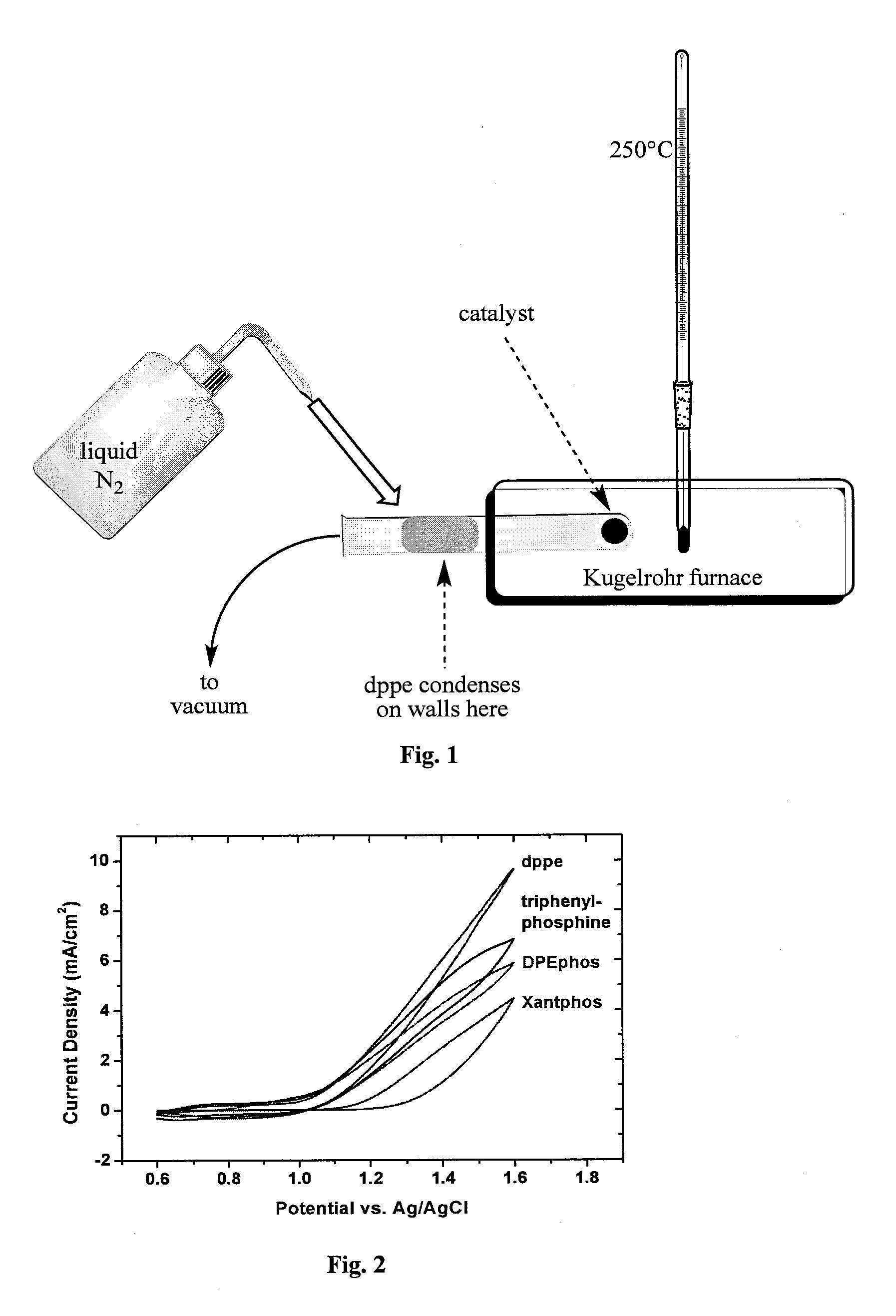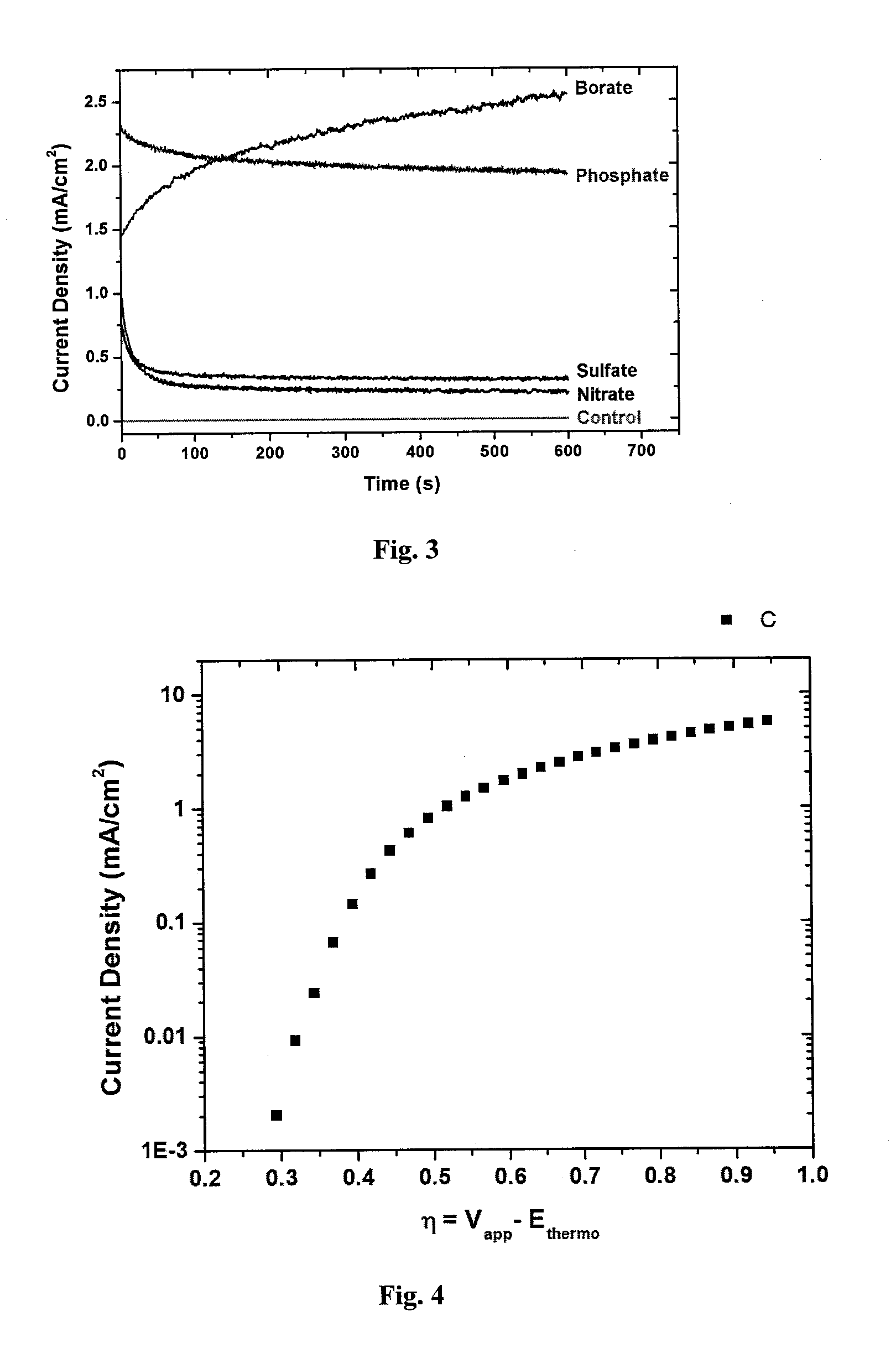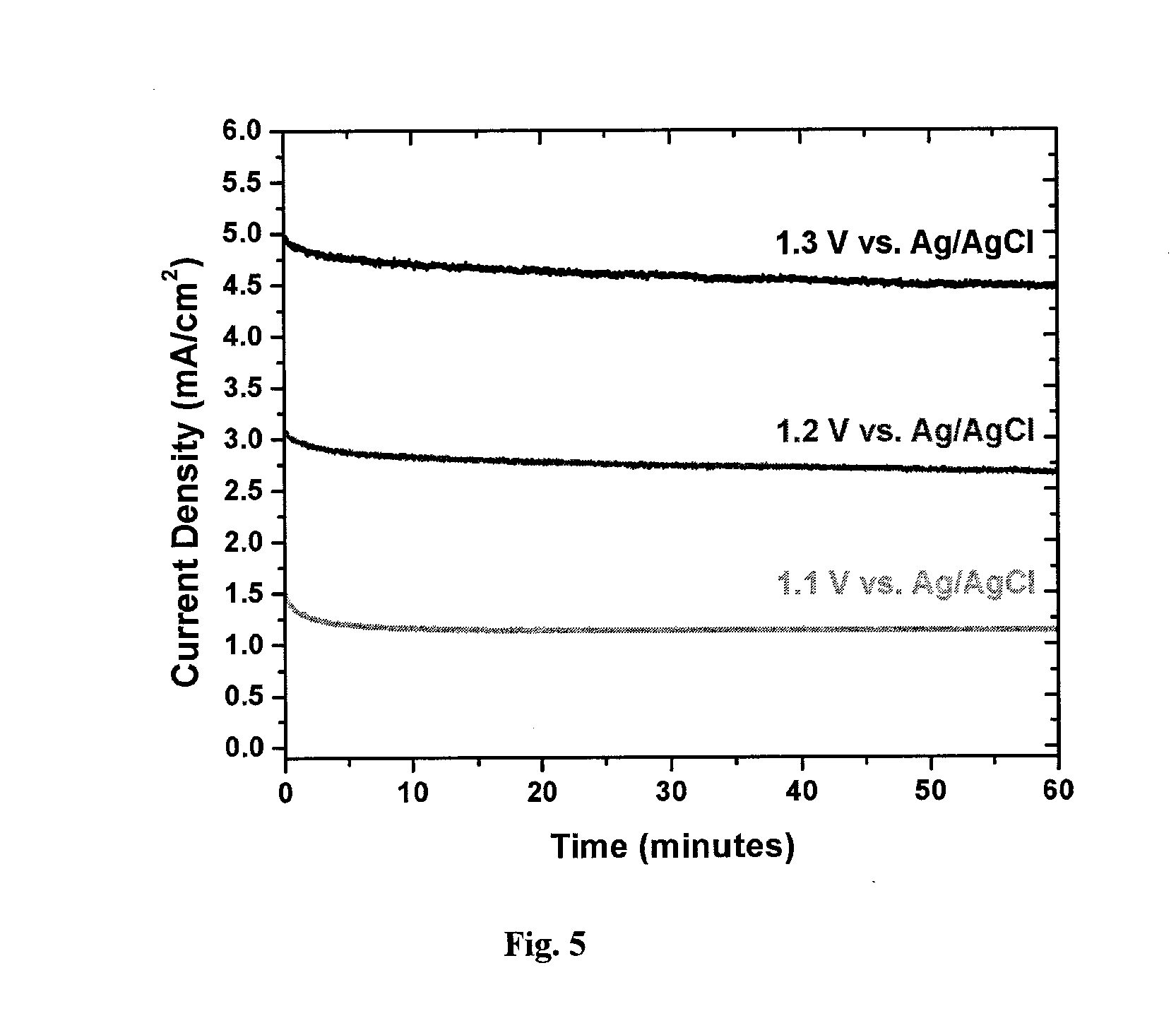Metal oxide-organic hybrid materials for heterogeneous catalysis and methods of making and using thereof
a hybrid material and heterogeneous catalysis technology, applied in the field of catalysis, can solve the problems of reduced overall amount of energy needed for these processes, low abundance, and high cost of such metals, and achieve the effect of enhancing robustness
- Summary
- Abstract
- Description
- Claims
- Application Information
AI Technical Summary
Benefits of technology
Problems solved by technology
Method used
Image
Examples
example 1
Catalyst Synthesis
[0120]In a nitrogen-filled glovebox, a 25×150 mm threaded Pyrex test tube was charged with dicobalt octocarbonyl (345 mg, 1.01 mmol), 1,2-bis(diphenylphosphino)ethane (399 mg, 1.00 mmol) and a large Teflon-coated magnetic stirbar, and sealed with a Teflon screw-cap with a small silicone septum. The tube was suspended over a rapidly rotating magnetic stir plate, and xylenes (5.0 mL, freshly sparged with dry nitrogen for 30 minutes) were added in one portion by syringe (immediate and rapid evolution of carbon monoxide was observed).
[0121]The mixture was stirred at ambient temperature until effervescence ceased (24° C., ca. 5 minutes). The tube was evacuated briefly and refilled with dry nitrogen. The tube was inserted 2 cm deep into a 160° C. stirring polyethylene glycol bath. The reaction mixture rapidly reached a stable reflux and was stirred vigorously for 90 minutes at reflux. Stirring continued as the mixture was allowed to cool to ambient temperature, whereupon...
example 2
Scaled Up Catalyst Synthesis
[0169]A 250 mL round-bottom flask equipped with a large Teflon-coated stirbar and a reflux condenser sealed with a rubber septum was filled with thy nitrogen. The reflux condenser was removed, and dicobalt octacarbonyl (22.8 g) was added quickly, before replacing the condenser. The flask was purged with dry nitrogen for 15 minutes. Xylenes (50 mL, sparged with nitrogen) was added by syringe and the reaction vessel was placed above a magnetic stirplate. Once the dicobalt octacarbonyl was fully dissolved, a stream of dry nitrogen was passed through the headspace of the reaction flask and was vented through a bubbler. A suspension of 1,2-bis(diphenylphosphino)ethane (26.4 g) in xylenes (110 mL, sparged with nitrogen) was added quickly by cannula. Evolution of CO gas was observed. The reaction mixture was heated to 160° C. (reaching reflux) and stirred vigorously for one hour. The reaction vessel was allowed to cool for 30 minutes before the condenser was rem...
example 3
Synthesis and Characterization of Related Catalysts
[0174]Inside a N2 atmosphere glovebox, a stock solution of Co2(CO)8 was prepared by weighing 975 mg into a Schlenk bomb and adding 39 mL of N2 sparged xylenes. The ligands 1,2-ethanediylbis[diphenylphosphine oxide], DPEphos, triphenylphosphine, 1,2-Bis(1-piperidinyl)ethane, TMEDA, EDTA, 4,4′-bipyridine, 2,2′-bipyridine, dppm, dppe, dppb, and dppp were weighed out into reaction tubes in an equimolar ratio to the Co2(CO)8 (except PPh3 2 mol eq). The tubes were sealed, evacuated and refilled with N2 three times.
[0175]Under nitrogen, 3 mL of the cobalt solution was added to each tube. The reactions were allowed to stir for 30 min under nitrogen purge. The tubes were heated to 160° C. for 90 min. The reactions were cooled to room temperature and allowed to stir open to air for 36 hrs. The reactions were centrifuged down and decanted. The solids were washed with ethyl acetate, centrifuged, and decanted until the solution was still clear a...
PUM
| Property | Measurement | Unit |
|---|---|---|
| pH | aaaaa | aaaaa |
| geometric surface area | aaaaa | aaaaa |
| time | aaaaa | aaaaa |
Abstract
Description
Claims
Application Information
 Login to View More
Login to View More - R&D
- Intellectual Property
- Life Sciences
- Materials
- Tech Scout
- Unparalleled Data Quality
- Higher Quality Content
- 60% Fewer Hallucinations
Browse by: Latest US Patents, China's latest patents, Technical Efficacy Thesaurus, Application Domain, Technology Topic, Popular Technical Reports.
© 2025 PatSnap. All rights reserved.Legal|Privacy policy|Modern Slavery Act Transparency Statement|Sitemap|About US| Contact US: help@patsnap.com



